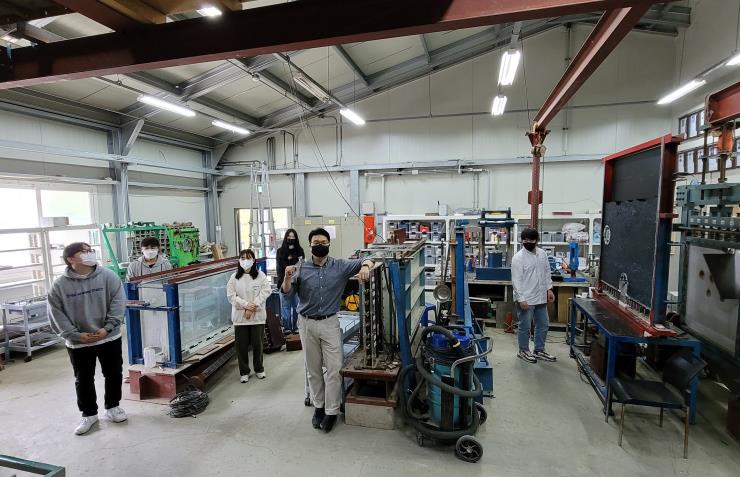- About Ajou
- Admission
- Academics
- Research
-
International
International
- Campus Life
-
News and Event
News and Event
- AUT
Ajou News
NEW Prof. Chang Il-han’s Research Team Develops Microorganism-based New Green Construction Material Technology
- 2021-11-16
- 7024

Ajou University Professor Chang Il-han from the Department of Civil Systems Engineering succeeded in developing new construction material technology using microorganism-based biopolymer.
Biopolymer, a macromolecule polysaccharide that generates microorganisms, is combined with earth and ground reinforcement technology that enable high intensity. It is gaining attention as an environmentally-friendly, low-carbon green technology that can replace cement in the field of construction.
Prof. Chang’s research findings were announced in Issue 307 of the journal Construction and Building Materials and entitled, ‘Site application of biopolymer-based soil treatment (BPST) for slope surface protection: in-situ wet-spraying method details and strengthening effect verification’.
Prof. Chang’s research team was joined by research teams from the Korea Institute of Civil Engineering and Building Technology (KICT) and theKorea Advanced Institute of Science and Technology (KAIST).
Prof. Chang has been conducting research on green construction materials that can replace cement in ground reinforcement engineering. His focus is on using biopolymer.
Soil combined with biopolymer displays high compression intensity, is highly resistant to erosion from water and wind, and facilitates generative growth. It is in the spotlight as a technology with applications to a variety of green construction fields and in the response to climate change, but had yet to be developed to the commercialization stage for use onsite.
Prof. Chang’s research team developed a wet spray technology to allow the construction of high intensity biopolymer-earth surface layer that involves creating a soil, biopolymer and water mixture and spraying it on the construction surface.
“This technology we developed creates a high intensity green surface stratum by mixing and spraying an earth, water and 0.5 – 1% biopolymer mixture. It is resistant to erosion from heavy rain and winds, and displays fast generative growth,” explained Prof. Chang.
He added, “Application is expected not only for surface stabilization of mountain slopes, stream beds, high flow plains, and embankments, but also for restoring the ecosystems of earth’s surface in areas that have become wastelands due to wild fires or desertification.”
It is currently undergoing a technology transfer to a business in green construction.
